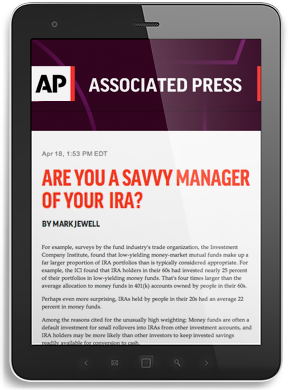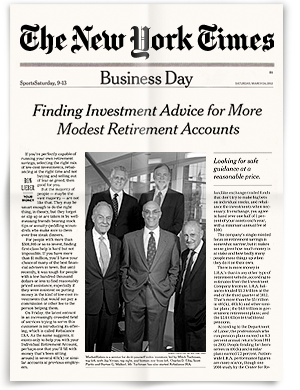2 Little-Known Retirement Savings Plans Tailored For Entrepreneurs

In an article in Entrepreneur Magazine, Managing Director Scott Puritz explains which retirement investment vehicles are best-suited for different business ventures.
For entrepreneurs, the disruptive products that they create, and the companies that they build, are their babies. While their expertise in their respective fields is impressive, as business owners they become responsible for matters usually left to large-company human resources departments. These include setting up retirement savings plans for themselves and for any employees they hire.
Taking full control of retirement savings for yourself and for others is daunting at first. But a basic understanding of which investment vehicles are best-suited to different start-up operations can easily put these fears to rest.
The better choice for sole proprietors.
Accountants and financial advisors typically encourage sole proprietors (small business owners who are the only employees of their respective firms) to set up IRAs within Simplified Employee Pension (SEP) plans. Yet the primary reason for this advice is that most professionals giving it are unfamiliar with solo 401(k)s, a very compelling alternative to SEP plans.
Solo 401(k)s, also known as “one-participant 401(k)s,” are portable by nature and enable entrepreneurs and their spouses to save more tax-deferred income at lower salaries over the long term. They weren’t created by the U.S. government until 2001 so, relatively speaking, they are the new kids on the retirement block.
Solo 401(k)s maintain rules and requirements similar to traditional employer-sponsored 401(k) plans, but entrepreneurs who use them can put away up to 25 percent of their compensation, in addition to their annual contribution limit ($18,000 in 2015, plus an extra $6,000 for those 50 and older).
In the current tax year, solo 401(k) savers can make a maximum contribution of $53,000, not counting the $6,000 catch-up provision for savers who are 50 and over. In addition, entrepreneurs can take out loans from their solo 401(k)s just as they would from traditional 401(k) accounts, but they can’t borrow from SEP IRAs.
An untapped gold mine.
Since solo 401(k)s are not widely marketed by brokerage firms, the Roth solo 401(k) variation is also ignored to the detriment of sole proprietors. It remains mostly unknown, even among accountants and financial advisors. Like Roth IRAs, a Roth solo 401(k) can accumulate after-tax contributions and allows for tax-free withdrawals after savers reach age 59-and-a-half.
When savers with traditional 401(k)s and IRAs reach age 70-and-a-half, they are required to begin taking required minimum distributions from their accounts, which are then subject to income tax. These mandatory distributions do not apply to traditional Roth IRAs or Roth solo 401(k)s. Having tax-free withdrawals is a plus, and using a Roth 401(k) enables sole proprietors to make significantly higher annual contributions compared to a standard Roth IRA while keeping their assets invested for as long as they need, even potentially passing on savings to heirs tax-free.
What if you have employees?
Entrepreneurs and their spouses can continue to obtain the benefits of traditional and Roth solo 401(k)s for as long as they are the only employees. Sole proprietors can maintain the status quo by expanding their team with independent contractors who can set up their own solo 401(k)s.
If an entrepreneur ends up hiring employees, that is when it makes sense to consider establishing a SEP IRA or a Savings Incentive Match Plan for Employees (SIMPLE) IRA plan. Both SEP and SIMPLE plans spare small businesses from the start-up and operational costs associated with traditional defined contribution plans and neither has an IRS filing requirement, but there are key differences between the two.
For example, SEP IRAs are available to businesses of any size, while only businesses with up to 100 employees who earned at least $5,000 during the previous year can offer a SIMPLE IRA plan. SEP IRAs accept only employer contributions, while both employers and employees contribute to SIMPLE IRAs.
Finally, in a SEP plan, employers must make salary-proportionate contributions for all eligible employees every year. However, under SIMPLE plans, employers can choose between an elective matching contribution of up to 3 percent of an employee’s salary, or a 2 percent non-elective matching contribution regardless of the employee’s contribution level.
Don’t be afraid.
As the saying goes, knowledge is power. It takes a great deal of courage and resilience to become an entrepreneur, but taking charge of all aspects of running a business, including retirement planning, can be overwhelming. Taking the time to learn about different retirement planning options can ensure that entrepreneurs succeed at another venture — achieving a comfortable retirement for themselves and their employees.






